The Wufenpu Garment Wholesale Area, as the popular clothing market opposite Taipei's Songshan train station is called, is a place that solves many of Taiwan's fashion mysteries in one fell swoop.
It's here in this semi-open-air market -- semi, because the goods spill out of the stores and onto the sidewalks and into the alleys -- where over 100 outlets supply a significant portion of the wardrobes favored by Taiwanese of all ages and fashion persuasions. And they do a brisk trade, with some stores selling by weight instead of item count, though single purchases of items are usually welcome.
Stores tend to specialize in specific fashion niches, such as trendy teeny-bopper gear, extra-large sizes, pet fashions, qipaos and pseudo-ethnic wear. Whatever their different specialties, they share a price range at the lowest end of the scale for clothes in Taipei.
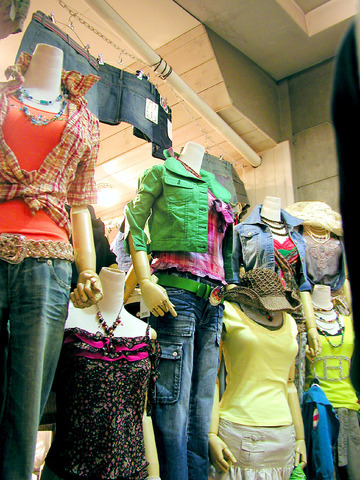
PHOTO: MAX WOODWORTH, TAIPEI TIMES
"It's a race here to the bottom, price-wise," said one storeowner surnamed Chen (
Which is perhaps why Wufenpu has become a term that, when evoked in description of someone's fashion-sense, is intended to carry the sting of an accusation of poor taste and quality.
Popular actress Hsiao Shu-shen (
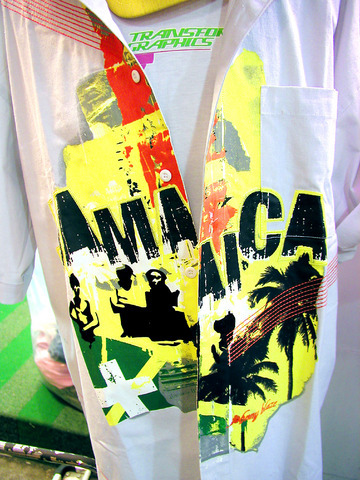
But despite the sneering aimed at the supposedly chintzy goods flooding out of Wufenpu, many people wandering the smart areas of Taipei are actually decked out in Wufenpu clothes and are making a fairly convincing show of having paid top dollar for their faux retro Mickey Mouse T-shirt or their sexy velour halter top. (Then again, some may have actually paid top dollar in East District boutiques for the clothes, but they would be suckers.)
It turns out that a lot of East District yuppies and hipsters, as well as teenagers mimicking pop star Jolin Tsai's (
But don't be fooled. The T-shirt with a Mary icon print and the words "Mary is my home girl" can be found at the market for about NT$200.
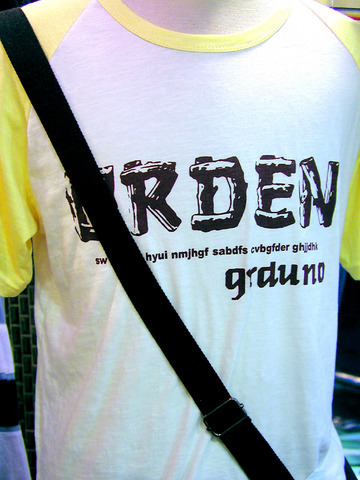
So before dropping a wad of cash for a DJ Guevara T-shirt or for an allegedly Nepalese skirt in front of the Dunhua South Road Eslite bookstore, savvy shoppers will make the trek to Wufenpu to pick them up for about NT$200 each.
Wufenpu is at its busiest on Mondays, as vendors from all parts of Taiwan come to stock up on goods that are later sold at night markets and stores. Using rapidly flashed hand signals, vendors haggle over prices for enormous bundles of clothes, which are then transported out of the narrow alleys behind scooters specially rigged with carts to the train station or to waiting courier trucks. From there, the clothes fan out around the city and the rest of Taiwan.
How the clothes reach Wufenpu, however, is a matter of considerable debate. The typical claim from vendors at the market for the provenance of their clothes is that they come from Hong Kong, Thailand and Japan. One vendor, however, confided that most of the products, in fact, were made in Taiwan.
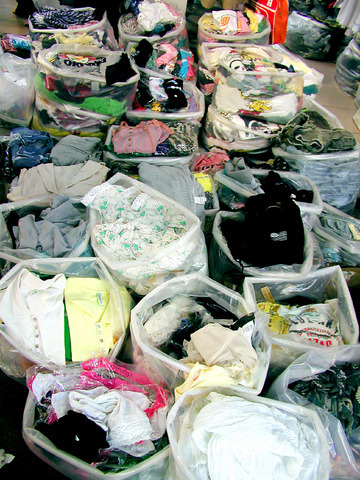
Either way, the sheer volume of knock-off goods provides ample reason to question how forthright the stores are about their products. But judging from the number of customers, no one seems to dwell on the point.
The market fulfills a huge range of fashion demands for all ages and that's good enough for most. And with its low prices, the market guarantees that the winds of fashion can change quickly without leaving everyone in the dust.

A vaccine to fight dementia? It turns out there may already be one — shots that prevent painful shingles also appear to protect aging brains. A new study found shingles vaccination cut older adults’ risk of developing dementia over the next seven years by 20 percent. The research, published Wednesday in the journal Nature, is part of growing understanding about how many factors influence brain health as we age — and what we can do about it. “It’s a very robust finding,” said lead researcher Pascal Geldsetzer of Stanford University. And “women seem to benefit more,” important as they’re at higher risk of
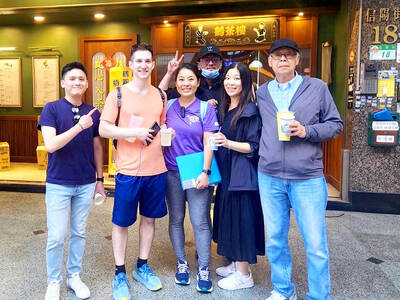
Eric Finkelstein is a world record junkie. The American’s Guinness World Records include the largest flag mosaic made from table tennis balls, the longest table tennis serve and eating at the most Michelin-starred restaurants in 24 hours in New York. Many would probably share the opinion of Finkelstein’s sister when talking about his records: “You’re a lunatic.” But that’s not stopping him from his next big feat, and this time he is teaming up with his wife, Taiwanese native Jackie Cheng (鄭佳祺): visit and purchase a
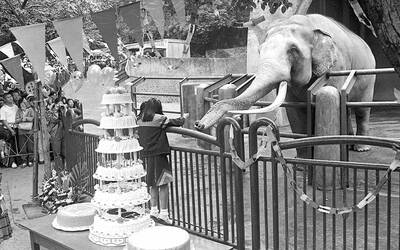
April 7 to April 13 After spending over two years with the Republic of China (ROC) Army, A-Mei (阿美) boarded a ship in April 1947 bound for Taiwan. But instead of walking on board with his comrades, his roughly 5-tonne body was lifted using a cargo net. He wasn’t the only elephant; A-Lan (阿蘭) and A-Pei (阿沛) were also on board. The trio had been through hell since they’d been captured by the Japanese Army in Myanmar to transport supplies during World War II. The pachyderms were seized by the ROC New 1st Army’s 30th Division in January 1945, serving
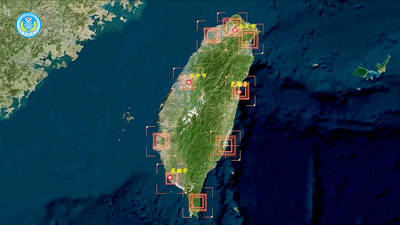
The People’s Republic of China (PRC) last week offered us a glimpse of the violence it plans against Taiwan, with two days of blockade drills conducted around the nation and live-fire exercises not far away in the East China Sea. The PRC said it had practiced hitting “simulated targets of key ports and energy facilities.” Taiwan confirmed on Thursday that PRC Coast Guard ships were directed by the its Eastern Theater Command, meaning that they are assumed to be military assets in a confrontation. Because of this, the number of assets available to the PRC navy is far, far bigger